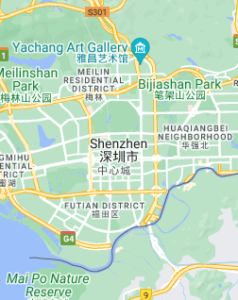OPINION-COLUMN | “Shenzhen Dream”, the Cambodian Version? (Part 3)
“Will Cambodia achieve its Shenzhen dream?”


There is no silver bullet to sustainable development and industrialization.
In fact, there have been many attempts to emulate Shenzhen. For instance, Indonesian President Suharto visited Shenzhen in 1990 and wanted to re-create similar SEZ in Batam island to take advantage of its proximity with Singapore just like the case in which Shenzhen had prospered owing largely to Hong Kong. But the project did not take off well as anticipated.
Shenzhen was created when China was relatively less developed. With limited resources at its disposal, China could not afford to spread them everywhere across the country. China decided to focus the scarce resources to the development of Shenzhen SEZ, along with other three SEZs, namely Zhuhai, Shantou and Xiamen to create success stories that can stimulate other areas in China, and to spread, share and link the development results with surrounding areas. Even among the four SEZs, the successes have been uneven.
The 40 years of efforts are difficult to replicate. But replication is not totally impossible either.
What we can clearly say is that the Shenzhen model too had to face trials and errors, or like what the Chinese saying that goes, “cross the river by feeling the stones”.
Shenzhen development is “gradual and adaptative” experiment but not that without a proper planning. For example, in different versions of Shenzhen master plans, the government has changed the so-called “strategic emerging industries” in accordance with the gradual development of Shenzhen in the global value chain.
The Shenzhen government has played a strong role as supporter rather than regulators of private sector. It has invested in infrastructure, facilities, and initiated activities to support boosting of entrepreneurship. This kind of investment on facilities is not attractive to private sector as the latter is more profit-oriented but it is important for the country’s long-term industrialization.
Indeed, even if the motive is noble but this is not without risk for the government either. Public investment needs a lot of capital. For example, if Cambodia wishes to build virtual universities like in Shenzhen, how do we make sure that universities agree to set up their satellite campus in Sihanoukville? How do we make sure that Sihanoukville would have many companies to create strong demand for those graduates? What if the construction is completed, and there are no talents coming to Sihanoukville due to lack of attractive jobs?
“Gradual and adaptative” approach is probably the rule of thumb.
High cost adventure should be avoided.
For the government side, even if we could have a perfect master plan, implementation is totally a different issue to dwell on. Coordination across ministries and different layers of implementing agencies is a realistic challenge for every government in the world. Mobilizing national momentum towards specific direction requires robust budget commitment, clear terms of reference for implementing agencies in different layers, and most of all a powerful institution with supporting human resources to drive the implementation process.
Beside an active and supportive government, private sector also has their special role to play which is to take the lead in terms of business and technological innovation. The question is how much Cambodia can enlarge the “homegrown contents” when Preah Sihanouk Province will be linked much stronger with the global value chain. Do we have good local companies to support the SEZ eco-systems? Do we have human resources with enough skills as required by the companies? How much Cambodia can supply homegrown materials into the global value chain by utilizing Sihanoukville as exit point?
Lastly, people’s perception and mindset are important. Could Cambodia re-create the “gold rush” investment climate? Can our people fully adopt the “time is money” mentality and would be willing to work until late at night like young people in Shenzhen, sacrificing their many long public holidays?
The reverse engineering of Shenzhen may require a whole-of-government approach to develop Preah Sihanouk Province into becoming a real growth locomotive and strong economic pole to the maximum of its potentials. To that end, we should avoid having over-expectation, but we should not diminish our dreams too much that we can no longer have dreams either.
Those dreams need to be planned, and constantly revised and adapted according to new realities.
Maybe in the future Cambodian people can also go to the moon. Why not? This is a Cambodian dream.
Sim Vireak
Strategic Advisor of the Asian Vision Institute (AVI) and PhD Candidate of Jinan University (Guangzhou).
TRIVIA:.
Shenzhen
Description
Shenzhen, in southeastern China, is a modern metropolis that links Hong Kong to China’s mainland. It’s known for its shopping destinations, including Luohu Commercial City, a massive mall with a vast array of wares, from tailors’ custom clothing to faux designer bags. The city also features contemporary buildings, such as the 600m-tall skyscraper Ping An International Finance Centre, and a number of amusement parks. ― Google


 Memento Maxima Digital Marketing
Memento Maxima Digital Marketing



 Ads by: Memento Maxima Digital Marketing
Ads by: Memento Maxima Digital Marketing






